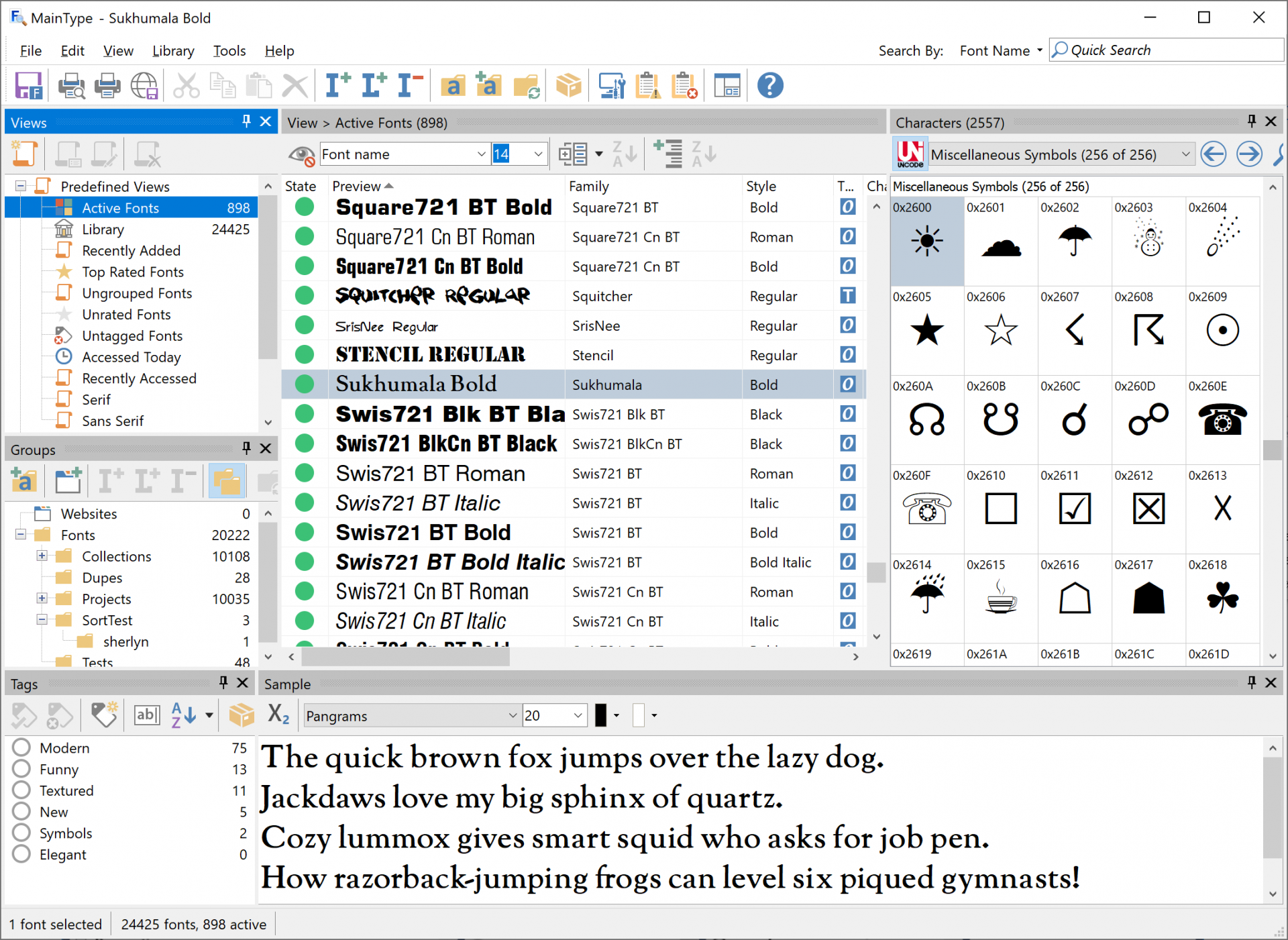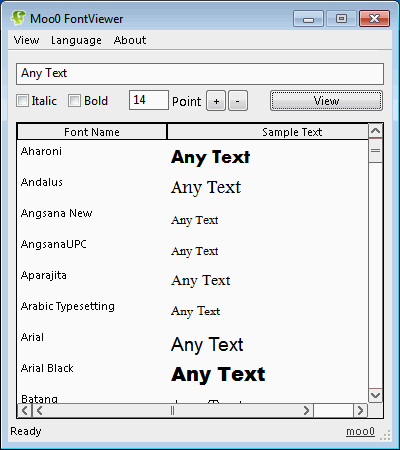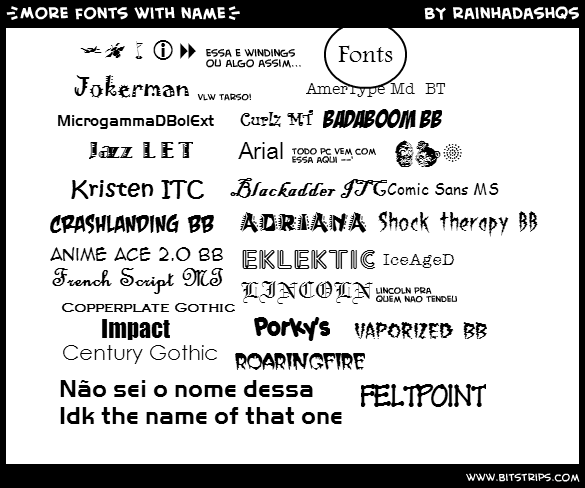
#Vlw font viewer code#
Or if you needed to determine that a certain part of the code was executed, you might print out a descriptive message. For example, if you needed to know the horizontal mouse location, you would write: println(mouseX) This is likely something you've done while debugging. The easiest way to display a String is to print it in the message window. String message = "The value of x is: " + x Variables can also be brought into a String using concatenation. Plus, of course, usually means add in the case of numbers. One other feature of String objects is concatenation, joining two Strings together. Depending on how String objects are created in a sketch, = will not always work.

String one = "hello" Īlthough both of the above methods return the correct result, it's safer to use equals(). The equals() function ensures that we are checking to see if two String objects contain the exact same sequence of characters, regardless of where that data is stored in the computer's memory. Even though they contain the same data- hello- if they are different object instances = could result in a false comparison. However, technically speaking, when = is used with objects, it compares the memory addresses for each object. Now, Strings can be compared with the = operator as follows: String one = "hello" So in the case of converting to uppercase, the method toUpperCase() returns a copy of the String object with all caps.įinally, let's look at equals(). Anytime we want to change the String, we have to create a new one. Once we create a String, it stays the same for life.

An immutable object is one whose data can never be changed. This is because a String is a special kind of object. Why didn't we simply say message.toUpperCase() and then print message variable? Instead, we assigned the result of message.toUpperCase() to a new variable with a different name- uppercase. You might notice something a bit odd here. String uppercase = message.toUpperCase() We can also change a String to all uppercase using the toUpperCase() method ( toLowerCase() is also available). String message = "This String is 34 characters long." However, when we ask for the length of a String object, we must use the parentheses since we are calling a function called length() rather than accessing a property called length. This is easy to confuse with the length property of an array. Note that Strings are just like arrays in that the first character is index #0! String message = "some text here." Īnother useful method is length(). We must remember that a String is an object with methods (which you can find on the reference page.) This is just like how we learned in the Pixels tutorial that a PImage stores both the data associated with an image as well as functionality: copy(), loadPixels(), etc.įor example, the method charAt() returns the individual character in the String at a given index. Nevertheless, this is only the data of a String. It appears from the above that a String is nothing more than a list of characters in between quotes. It's much simpler to do the following and make a String object: String sometext = "How do I make String? Type some characters between quotation marks!" If we didn't have the String class, we'd probably have to write some code like this: char sometext = Ĭlearly, this would be a royal pain in the Processing behind. What is a String?Ī String, at its core, is really just a fancy way of storing an array of characters.
#Vlw font viewer full#
The full documentation can be found on java's String page.

This page only covers some of the available methods of the String class. Where do we find documentation for the String class?Īlthough technically a Java class, because Strings are so commonly used, Processing includes documentation in its reference. Nevertheless, although you may have used a String here and there, it's time to unleash their full potential. PImage img = loadImage("filename.jpg") // Using a String for a file name For example, if you've printed some text to the message window or loaded an image from a file, you've written code like so: println("printing some text to the message window!") // Printing a String Strings are probably not a totally new concept for you, it's quite likely you've dealt with them before. If you are looking to display text onscreen with Processing, you've got to first become familiar with the String class.

If you see any errors or have comments, please let us know. This tutorial is from the book Learning Processing by Daniel Shiffman, published by Morgan Kaufmann, © 2008 Elsevier Inc.


 0 kommentar(er)
0 kommentar(er)
